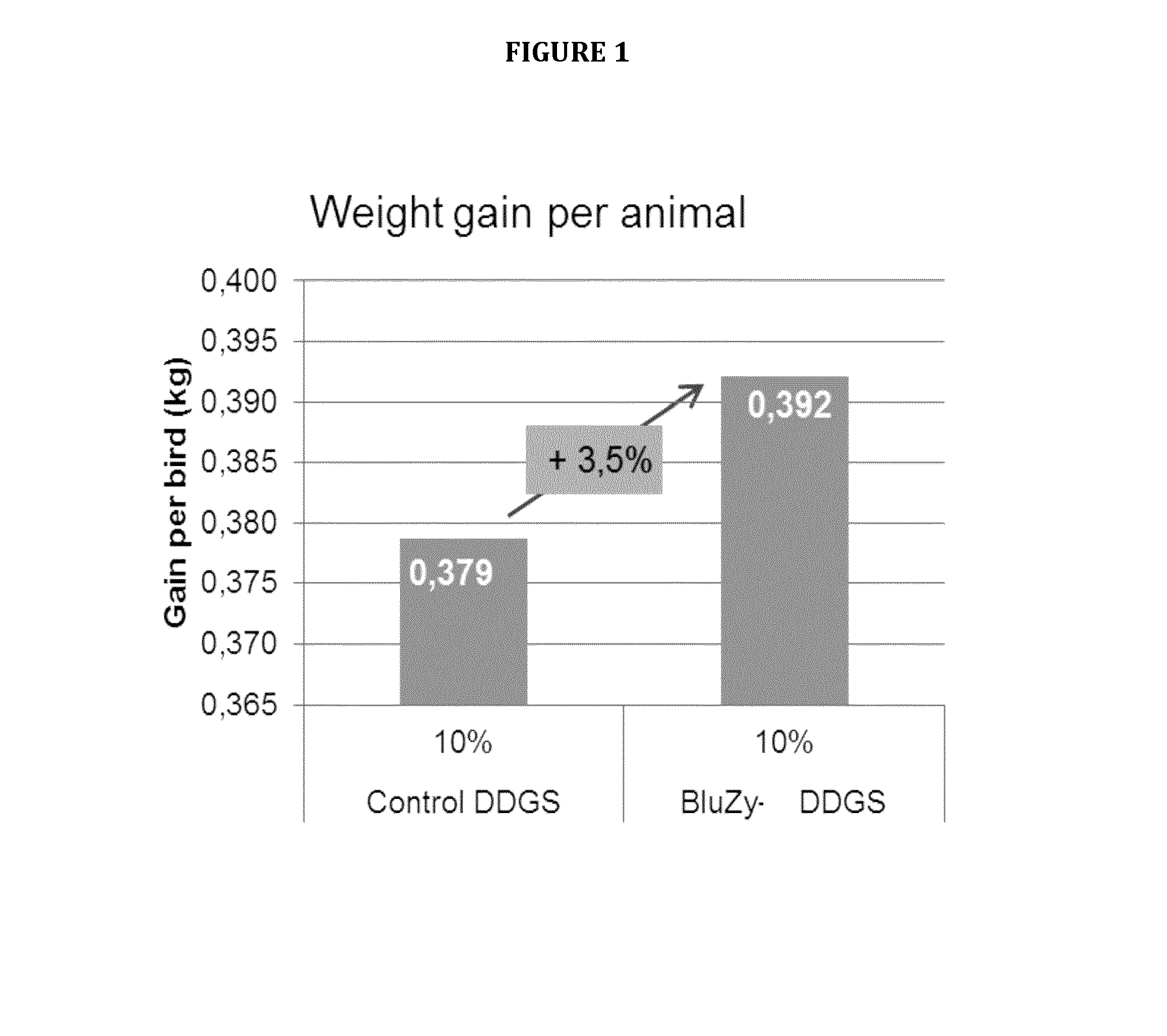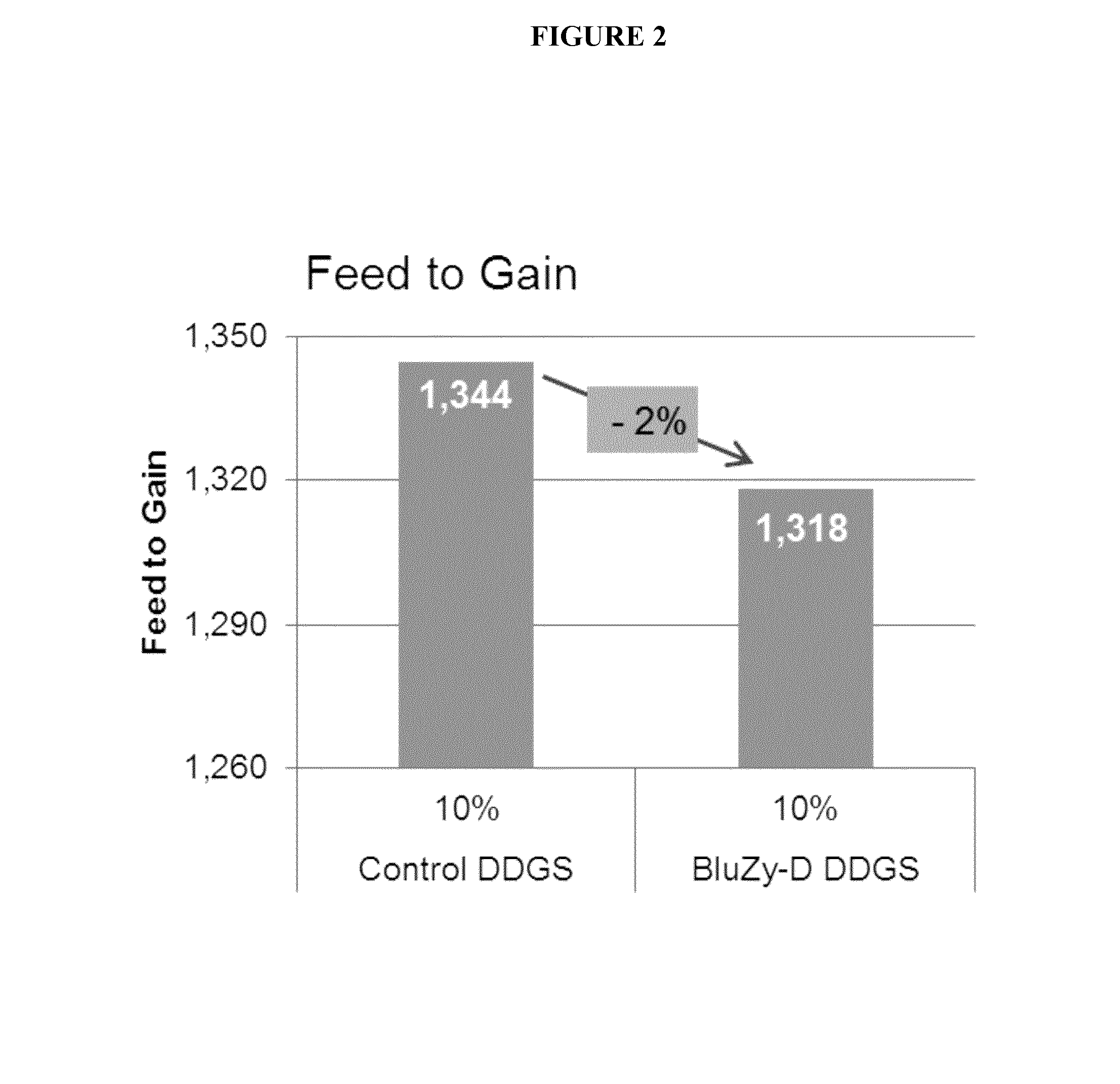Animal feed product for monogastric animals
a monogastric animal and feed product technology, applied in the field of animal feed compositions, can solve the problems of slowing down the feed passage rate, affecting the quality of feed, and the consistency of the face is not well suited to monogastric animals, so as to improve the availability and digestibility of amino acids, improve nutrition quality, and reduce fiber content
- Summary
- Abstract
- Description
- Claims
- Application Information
AI Technical Summary
Benefits of technology
Problems solved by technology
Method used
Image
Examples
example 1
[0094]Feeding enzyme treated DDGS at 10% in starter period to broiler chicken.
[0095]This example describes a feeding trial with broilers comparing the performance of a commodity DDGS with the DDGS produced as a by-product in a fermentation process comprising the step of subjecting the fermented mash after the fermentation to an enzyme composition comprising an enzyme or a mixture of enzymes capable of degrading one or more fermented mash components (“treated DDGS”). The enzyme composition comprised the commercial product BluZy having 1?-1,3, glucanase and xylanase as main enzyme activities.
[0096]The following table 1 shows the trial protocol:
TABLE 1Study Animals:Broiler ChickenBreed / Strain:Cobb 500 fast feathering maleDescription:Day-of-hatch chicksSex:MaleOrigin:Cobb Hatchery in Cleveland, GABreeder Flock Age:38 weeks of ageInitial Age:1 dayInitial Weight:38 to 50 grams
Trial Set Up:
[0097]8 pens per treatment
19 birds per pen
Mash diets, formulated on a digestible amino acid basis
Stan...
example 2
Determination of Metabolizable Energy of Enzyme Treated DDGS
[0104]True metabolizable energy (TME) is determined in Single Comb White Leghorn roosters. Roosters are fasted for 24 hours and are then fed with 30 g of test feed ingredient comprising treated or control DDGS. Excreta are collected for 48 hours and analyzed for energy using a Parr Instruments bomb calorimeter. True digestibility (energy or mineral) is determined as the percentage of the difference of the nutrient delivered during the test feeding and the nutrient recovered in the excreta collected over the 48 hour period corrected by the endogenous losses calculated from the fasted birds. Energy determination will be corrected for N.
TABLE 3TMEnDrySamplekCal / kgProduction batch AControl DDGS3708BluZy-D DDGS3920Production batch BControl DDGS3422BluZy-D DDGS3711
[0105]As shown in table 3, treated DDGS had an increase in TMEN content of 6%-8% compared to non enzyme treated DDGS.
PUM
 Login to View More
Login to View More Abstract
Description
Claims
Application Information
 Login to View More
Login to View More - R&D
- Intellectual Property
- Life Sciences
- Materials
- Tech Scout
- Unparalleled Data Quality
- Higher Quality Content
- 60% Fewer Hallucinations
Browse by: Latest US Patents, China's latest patents, Technical Efficacy Thesaurus, Application Domain, Technology Topic, Popular Technical Reports.
© 2025 PatSnap. All rights reserved.Legal|Privacy policy|Modern Slavery Act Transparency Statement|Sitemap|About US| Contact US: help@patsnap.com


